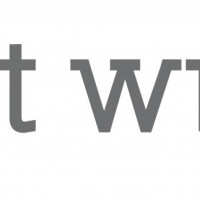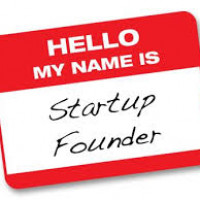Guest post by David Spinks, co-founder and CEO of Feast. The views expressed here are solely those of the author, and do not reflect the views of Food+Tech Connect.
Accelerators are cropping up everywhere and becoming a common practice for early stage startups.
A couple months ago I wrapped up my stint in the 500 Startups accelerator. After having some time to reflect on my experience I wanted to share some tips for getting the most out of the accelerator based on what we found worked well and what I would have done differently.
I also participated in the Dreamit Accelerator program in 2009 as part of the SeatGeek team, so I have a couple points of reference. That said, not all of these tips will apply to all accelerators.
Lets do this.
1. Keep Your Product and Customers Top of Mind
The biggest struggle for me was to stay grounded and focused throughout the program. Accelerator programs can feel a bit like summer camp for startups. There’s this constant energy and excitement involving events, including speakers, people always conversing, drinking, and having fun.
With the cash that the accelerator gives you, it might also be the first time you haven’t had to worry about money in a while, so you lose some of that urgency and focus that comes with a depleting bank account.
It felt like this crazy immersive experience, and Nadia and I would often find ourselves laughing about how unreal it all felt. It’s like for 3 months, you step out of the real world.
It makes for a powerful overall experience, but it’s also very easy to get caught up in it all and forget that you have a business to run. You have a product to build and customers to care for.
Don’t lose sight of your customers, who are still in the real world. That’s why you’re there in the first place.
2. Question Everything
Accelerators tend to utilize ideas or concepts that you’ll constantly hear, over and over again. For example, we’d be encouraged to find our “superpower,” – build a huge investor pipeline and memorize our key metrics.
Accelerators will also have a set program that everyone goes through. Some of them are more planned than others, but pretty much every one I’ve seen, at the very least, has something along the lines of: general learning –> fundraising –> pitch prep –> demo day.
These might be the right things for you to do. But they might not be.
You may be told that fundraising is optional, or that demo day is optional, and that you choose how you want to experience the program. While that may be very true, the influences will still be there and you will feel a lot of pressure to follow that agenda. Most, if not all, of the other companies will be doing it too, so it’s hard to be the one that doesn’t.
So I really encourage you to question everything. Question what advisors tell you. Question what the program encourages you to do. Question whether or not anything you hear is right for your company. If it passes, have at it. If not, don’t be afraid to say no and focus on what’s right for your company.
3. Create Opportunities to Interact with Your Batch Mates
There will be some events that the accelerator team plans for you, but the best experiences are often the ones you plan for yourself.
This won’t happen on its own. You need someone to step up and make it happen. Everyone’s busy and it becomes easy to just let time go by without getting together. Here are some fun things that we organized:
- Angellist review sessions
- Barbeques/pool parties
- Demo Day Pitch feedback sessions
- Homepage feedback session
- Bowling nights and movie nights
- Pitch deck review sessions
4. Set Up Routines
Again, it’s really easy to get caught up in the day to day activities of the accelerator and lose your focus.
Setting up proper routines can really help you stay grounded. Things like taking walks to get out of the office, working out before coming in, setting up regular intervals of time where you can focus on your work (maybe you need to work somewhere else), etc.
I talk more about the power of routines, and some that I’ve experimented with here.
5. Ask for Stuff
500 Startups is pretty hands off throughout the program. It’s really up to you to ask if you need something.
Do it. Ask. Often.
While you’re at the accelerator you have the rare opportunity of interacting, in person, with the partners of the program. They’re likely very smart people with a great deal of experience working with startups and a large network. Ask for feedback. Ask for introductions. Ask for advice.
Of course, respect their time. But don’t wait for them to come to you.
6. Be Proactive in Helping Other Companies
One of the amazing aspects of accelerators is they bring together a lot of founders with a wide range of experiences. There are likely amazing developers, designers, community builders, storytellers and marketers sitting all around you.
What are you really good at? Let other companies know so that they can come to you for help with those specific questions. Don’t assume that they’ll just know that you’re an amazing designer. Send a friendly email to the group letting them know that you’re there to help.
The relationships I came away with were the most valuable aspect of the accelerator. Helping other founders is the best kind of networking and relationship building you can possibly do.
7. Remember That It’s Just One Phase in Your Journey
While the accelerator can start to feel like it’s the end all be all, that you have to figure it out by demo day or else you’re screwed. That’s just not true. While the pressure of demo day as a “forcing function” can be an effective way to light a fire under your butt, it’s most certainly not a make or break situation.
Actually, aside from a press mention, we didn’t get a great deal of value from demo day. It’s just another day in the long stretch of your company. The entire program is just one small piece of the longer journey.
When you think about what you want to get out of the accelerator, think about the stage you want to be at by the end, and work towards that goal.
This article originally appeared on What Spinks Thinks on October 16, 2013.
_________________

David Spinks is the CEO of Feast, making it possible for anyone to become “that person that cooks”.






